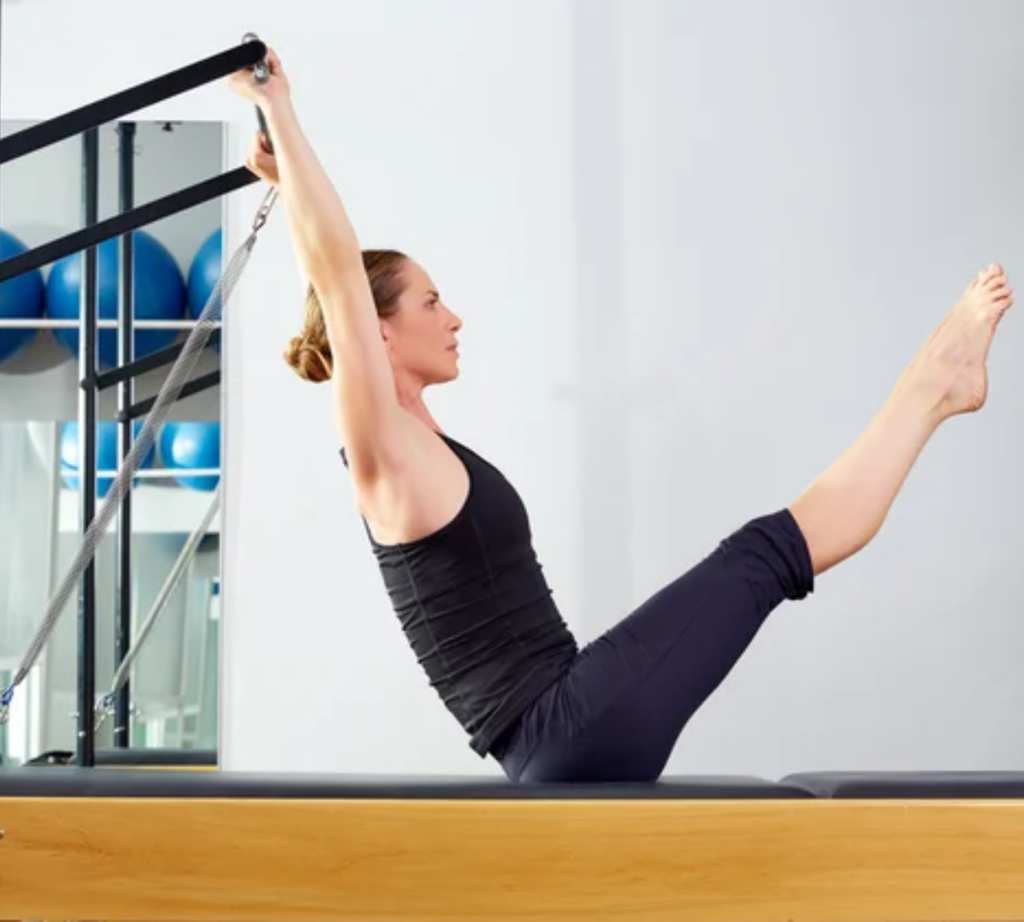It seems like every day there’s a new workout routine or fitness subscription, but one proven way to strengthen your body has been around for a century – and it’s not going out of style anytime soon.
Pilates vs Yoga, What’s the difference?
Those looking for relaxation exercises often come across both yoga and Pilates. The biggest difference between yoga and Pilates is the importance that the body and mind have in each case. While Pilates focuses mainly on the body, yoga is primarily about creating a unity of body and mind. Yoga is a millennia-old Indian philosophy of life that describes the path to self-knowledge through meditation, physical exercises and breathing. Pilates was developed by Joseph Hubert Pilates during World War I as a strengthening program for soldiers and began to become popular in the USA in the 1960s.
The goal here is to strengthen the center of the body and thereby improve the posture of the entire body. The core of the body is a central element in Pilates and is also called the “powerhouse”. Yoga and Pilates differ centrally in the importance of breathing. In yoga, breathing is done in abdominal breathing through the nose, in order to be able to hold the exercise as long as possible. In Pilates breathing merely sets the rhythm of the movements. Inhalation prepares the exercise; the actual exercise is performed in exhalation. For yoga you usually only need a suitable mat, rarely are aids such as meditation cushions, blocks or belts used as support.
Yoga mainly trains the trunk and back muscles, but joint mobility, self-awareness and relaxation are also positively influenced, as are chronic pain in the neck, head and back, sleep disorders, digestive and circulatory problems. The range of effects of yoga especially for women is wide. On the other hand, Pilates exercises focus on concentration, control and precision, they also strengthen the spine and improve overall posture. All exercises are performed in flowing movements and are repeated over and over again. Equipment specially developed for Pilates is used to make the exercises more precise, such as the Pilates ring or the Reformer, a resistance device with cable pulls.
What does Pilates do for your body?
Pilates works mainly on your core which includes your abdominal area and your spinal area. This is why Pilates can be extremely beneficial for people who suffer from lower back pain. Pilates for women also help your body to strengthened and toned including your legs, especially your upper thighs, and your buttocks. Pilates has also been useful for people who suffer from arthritis as it helps to keep your joints flexible because it strengthens the thigh muscles.
All that core conditioning can also help you get flat abs and a sculpted waistline, but improved alignment, posture, range of motion, and all-over strength are the most common results. Pilates gives you strength, stretch and control of your body and mind while working your posture in a lifted, beautiful and powerful way.
What are the benefits of Pilates?
As Pilates focuses on core strength, posture and flexibility the health benefits include:
1. Good posture: Pilates will teach you to gain and maintain good posture. This is especially beneficial if you suffer from lower back pain.
2. Muscle Tone: The exercises will significantly tone your muscles. This is especially good for older people and those who are normally quite sedate in their daily life as muscle tone is usually lost with age and inactivity.
3. Flat abdominal muscles: Because Pilates focuses on strengthening your core, you’ll find that that it will result in a flat stomach.
4. Flexibility: As we age, we tend to lose the flexibility we had when we were young. Practicing Pilates helps avoiding injuries from falls.
5. Improves your balance: When practicing Pilates, you become much more aware of how your body moves and how it functions. It therefore improves your physical balance through correct posture.
6. Reduces stress: When doing the exercises, you’ll be focused on your breathing and on the moves. This is an excellent way to relieve stress.
7. Gives you a general sense of well-being: Because Pilates focuses on providing balance between your mind and body it gives you an overall sense of well-being.
How to start doing Pilates?
If you are starting Pilates as a beginner, it is recommended to practice with professional support from an experienced instructor who will put you through the paces using the correct form, either one-on-one or in a group class. Most of the exercises are not difficult, but they are challenging: to perform the exercises not only correctly, but also as effectively as possible is really important. You can try mat work or machines. Your gym might have a Pilates Reformer (a platform with springs and straps attached to add resistance). For the full suite of Pilates equipment, you’ll need to join a studio.
But you can also get in an effective and convenient workout at home. Just roll out a matt and follow your instructor on screen or join the women’s empowerment circle at MY BODHI and book a private Pilates session for women online. The key to getting fitter, more active, more flexible and stronger with Pilates is regularity. Train rather in small units, but continuously and make your training as easy and motivating as possible. Whether training on-site at the studio or online: The class or hourly format you choose should fit seamlessly into your habits. Whatever route you take, navigating the world of Pilates is neither tough nor tricky. It’s fun! Enjoy the journey.



